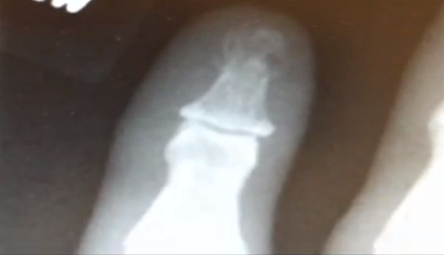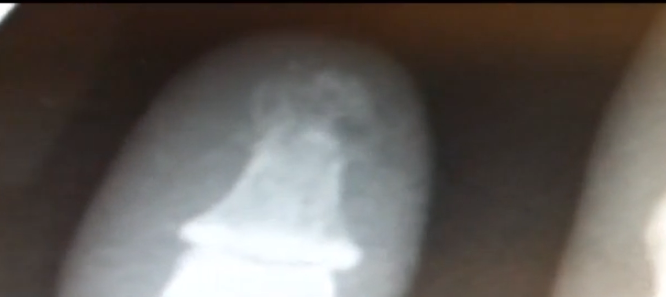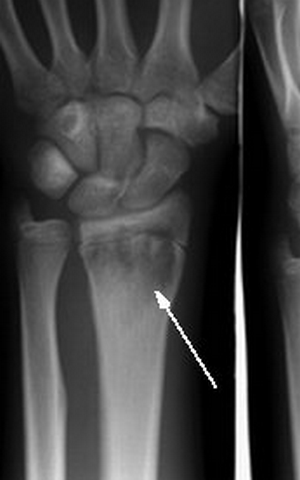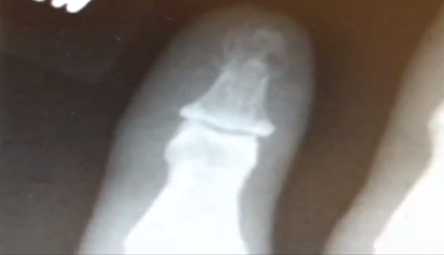What is Osteomyelitis?
One in every 10,000 people around the world have tendency to develop osteomyelitis and this suggests that it is one of the rarest diseases related to human bones. The word osteomyelitis, describes the disease itself, as it is made up of three Greek words ‘osteon’, ‘myelo’ and their meaning bone, marrow infection respectively. According to medical science, there are two types of osteomyelitis: Suppurative Osteomyelitis, where morbific matter(infective agents) is formed around the bone along with discharge of pus and Non-Suppurative Osteomyelitis, where no pus is formed. Suppurative Osteomyelitis is further categorised into Acute and Chronic osteomyelitis, whereas non-suppurative osteomyelitis is classified into diffuse sclerosing, focal sclerosing, proliferative periostitis and osteoradionecrosis. Rare but curable, lets understand the lifecycle of this disease
Osteomyelitis Causes
Osteomyelitis is not confined to any specific bone of human skeleton. It is caused due to presence of mycobacteria or pyogenic bacteria in bone marrow. Osteomyelitis can affect humans of all age groups, however, the reason could vary from person to person and age. Also, different type of bacteria is responsible for osteomyelitis.
| Age group of patient | Responsible bacteria |
|
Upto 4months |
S.aureus & Streptococcus |
|
4months to 5years |
S.aureus & Haemophilus influenza |
|
5years and above |
S.aureus, Streptococcus & Salmonella |
One shall think “how these microorganisms reach and infect the bone marrow?” Microorganisms infect the human bones basically through one of the following means:
- Blood
Bacteria can flow into the bloodstream through local areas of infections, as in case of cuts and wounds.
- Penetrating Trauma
As in case of joint replacements and removals
- Fracture operations
This can also be considered the part of penetrating trauma, as in case of fracture joints.
If bone is infected by bacteria than human immune system sends WBCs and leukocytes to the affected part of bone to kill it. Once leukocytes reach the affected area, in process of killing it, they release chemicals or enzymes that damage bone cells. This is also referred to as lysing of bone. Due to this disintegration of bone cells, pus is formed and it interferes with the flow of blood to the target area. This forms base for further infection. If not diagnosed timely and properly, it may lead to chronic conditions. Symptoms of osteomyelitis are swelling and tenderness around the affected bone, and pain while moving the affected bone. Person suffering from acute osteomyelitis may suffer from nausea, fever and fatigue along with above mentioned symptoms.
Diagnosis of osteomyelitis
One of the important factors while diagnosing osteomyelitis if identification of bacteria which has caused it. Various diagnosing techniques used for the diagnosis of osteomyelitis are blood test: to identify elevated level of WBCs, x-ray scan: to identify bone damage, CT scan and MRI scan: to observe cross sectional view of internal part of bones and observe soft tissues surrounding it. Apart from above mentioned techniques, bone biopsy, has been considered most effective way of diagnosing osteomyelitis. This is because of the fact that bone biopsy gives exact nature of the bacteria which has affected the bone. However, bone biopsy is a long procedure to perform as it requires local anaesthesia to be administered. Once anaesthesia is administered to the patient, doctor can insert a catheter with a needle, through the skin, to collect sample or perform surgery for the same. Doctors also combine imaging techniques along with biopsy for effective diagnosis.
Risk factors
People suffering from diabetes, urinary tract infection, teeth infections, sickle cell disease, open fractures and vascular insufficiency are at high risk of osteomyelitis as they form entrance points for bacteria into bloodstream. Therefore, people suffering from above mentioned diseases should take necessary precautions during tenure of treatment to avoid any kind of infection.
Osteomyelitis Treatment
Once osteomyelitis is diagnosed, depending on circumstances and severity, doctor can select medicinal or surgical procedure. Medicinal procedure includes administration of antibiotics intravenously, over a period of four to six weeks. If condition is severe, then oral antibiotics are also prescribed along with intravenous injections. As antibiotics are administered for a long period of time, therefore, patient may report problems like nausea, headache, acidity, vomiting and diarrhoea.
Surgical treatment for osteomyelitis include:
- Draining out of infected area wherein the surgeon drains out pus or fluid around the bone.
- Removal of infected bone or tissue also known as debridement.
- Removal of surgical plates and screws, if installed at the time of treating fracture.
- As recourse, complete removal of limb is suggested to stop infection from spreading further.
One can keep osteomyelitis at bay, by minimizing risk of infections by taking precautions during cuts, wounds, diabetes, tooth root canal, fractures and other ailments which could give access to bacteria and germs to bloodstream.
Osteomyelitis Pictures



